Taxonomy of programming environments for novices
Статья Программирование/Языки - перечень языков программирования (перечень языков для обучения навыкам программирования и кодирования)
Different types of Taxonmy:
- Five levels
- What makes programming hard?
- Clusters
Содержание |
Five levels
Initial Learning Environments
- Level 0
- Age range 2-7 years. Drag-and-Drop or simpler. Teaches planning (sequence) only. Requires no abstraction. Contains no significant use of: functions, variables, iteration, indexed data structures, conditional execution.
- Examples: Daisy the Dinosaur, LightbotJR, ScratchJR, Pictomir
- Level 1
- Age range 5-10 years. Drag-and-Drop. Requires no abstraction (or small amounts). Contains none or few of: functions, variables, iteration, indexed data structures, conditional execution.
- Examples: ScratchJR, Pictomir, Lightbot, Kodu, Blockly, Hopscotch, Scratch, Tynker
- Level 2
- Age range 8-14 years. Drag-and-Drop or textbased. Includes some abstraction. Contains some or most of: functions, variables, iteration, indexed data structures, conditional execution.
- Examples: Kodu, Blockly, Hopscotch, Scratch, Tynker, NetLogo, Alice, AppInventor, Looking Glass, Snap!
- Level 3
- Ages 12 years and up. Drag-and-Drop or textbased. Includes abstraction. Contains all of: functions, variables, iteration, indexed data structures, conditional execution.
- Examples: Scratch, Tynker, NetLogo, StarLogo Nova, Snap!, Alice, AppInventor, Looking Glass, StarLogo Nova, BlueJ, KidsRuby
- Level 4
- Ages 14 years and up. Teaches an industry-level. Turing-complete programming language. Advanced, with extensions available. Contains all of: functions, variables, iteration, indexed data structures, conditional execution.
- Examples: Squeak, Codecademy
What makes programming hard?
Mark Guzdial believes that each novice programming environment (or family of environments) is attempting to answer the question, "What makes programming hard?". In his article "Programming Environments for Novices" Guzdial focuses on three families that have been particularly influential in the development of modern environments:
- The Logo family of programming environments, that began as an off-shoot of the AI-programming language Lisp
- The rule-based family of programming environments, that drew from both Logo and Smalltalk-72, but even more directly, Prolog.
- The traditional programming language family of novice programming environments, which tried not to change the language, but instead provide new student-centered supports for existing programming languages.
Logo family
The answer to the question of "What makes programming hard?" for the Logo developers was another question. When Logo was first being developed, people didn't know that programming was going to be so hard for so many. Programming was still a curiosity, an activity practiced only by the few who had access to the still-rare machines. The Logo developers asked instead "Why should students program?"
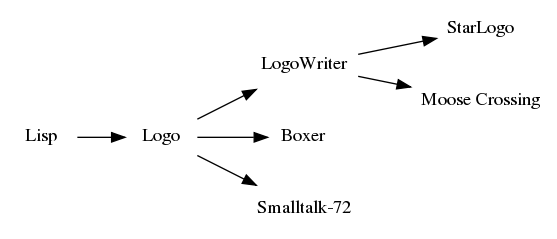
The Logo family of novice programming environments
The rule-based family of programming environments
Another set of answers to the question "What makes programming hard?" includes "The interface" (as diSessa said) but also "The kind of programming" (as Kay said).
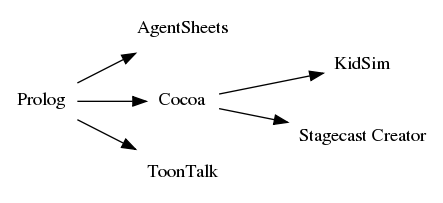
The rule-based family of programming environments
The traditional programming language family

Family of novice programming environments based on supporting traditional programming languages
Why novices need to program? Novice Programming Systems and Languages Taxonomy
- Lowering the Barriers to Programming
- a survey of programming environments and languages for novice programmers
- Caitlin Kelleher and Randy Pausch, 2005
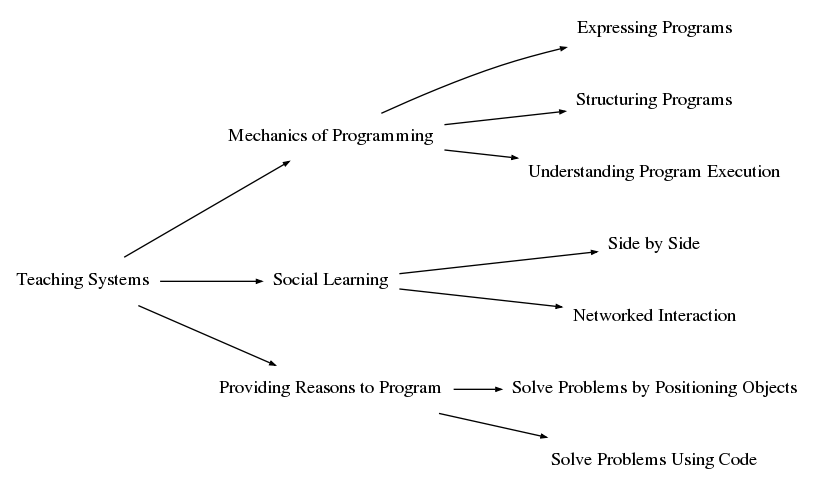

Next step
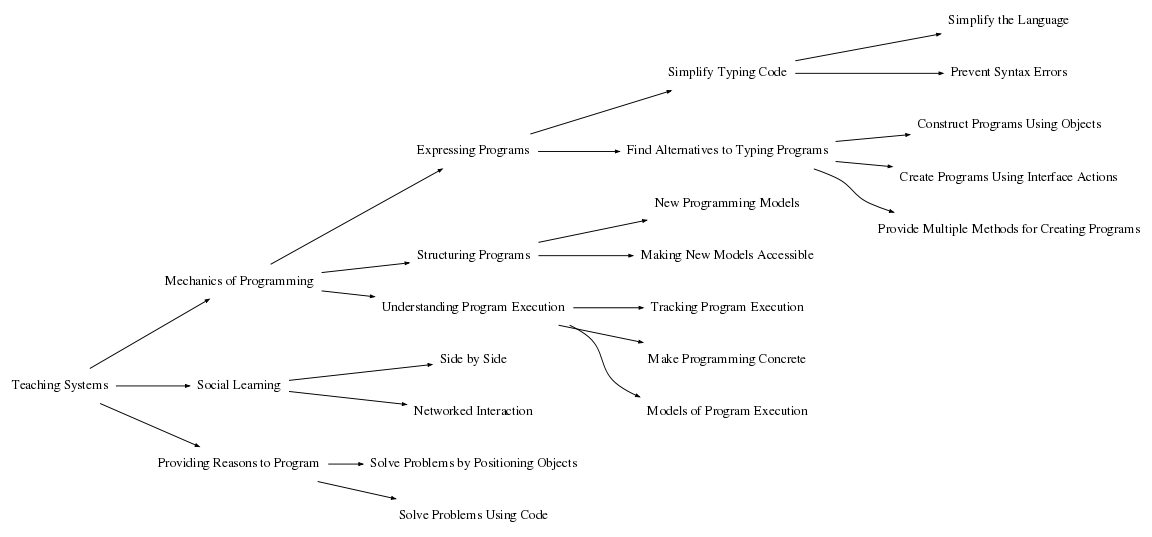
ILes Part I
- ILEs

ILEs Part II
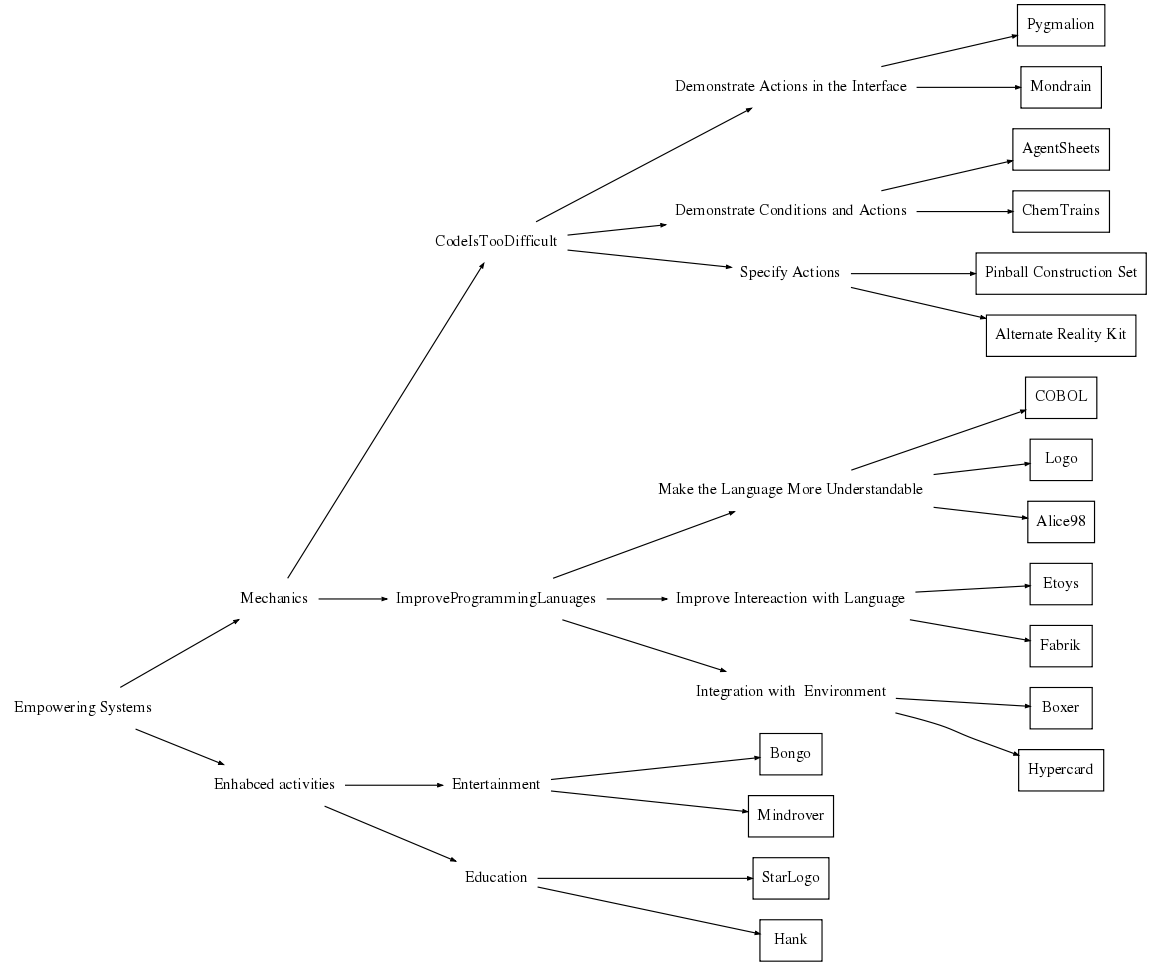
Full taxonomy
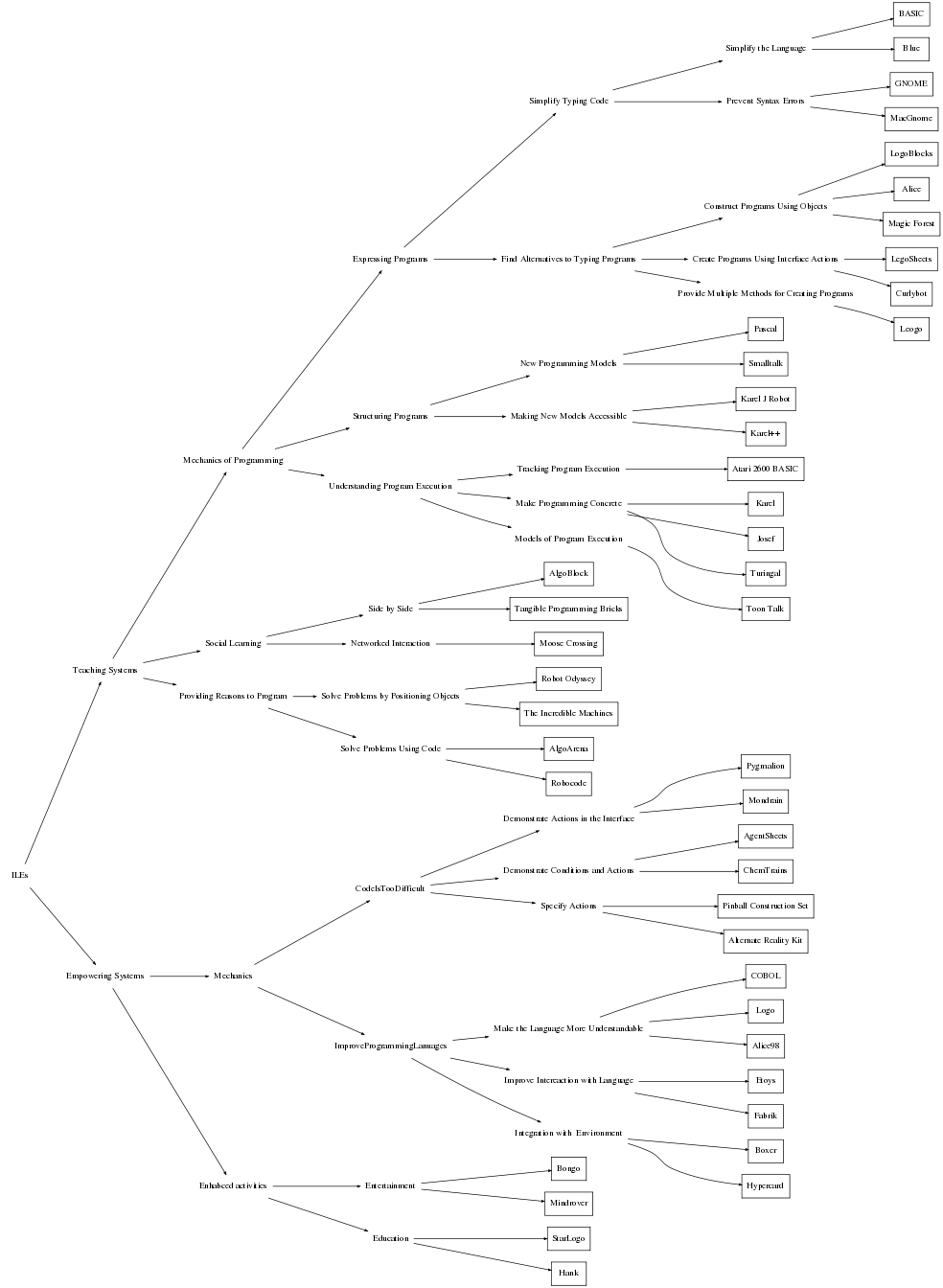
TACCC 3
Template for a resource review
García-Peñalvo, F.J., 2016. Template for TACCLE 3 resources reviewing. DOI= http://dx.doi.org/https://dx.doi.org/10.6084/m9.figshare.3545033.v1.
Title: The resource title Description: A short, but significant resource description Link: Link to the resource if it is available License: What kind of licensing system the resource has, if available (e.g. if videos are considered rather than software) Languages: In which languages the resource is available Target groups: Which are the main target groups of this resource Known uses: Examples of the use of the resource, it they exist (including videos, text based descriptions, links, etc.) Pedagogical level: Resource pedagogical level TACCLE Classification: The classification of the resource taking into account TACCLE ontology (Algorithms, Using logic, Controlling things, Creating and Debugging) Quality: Perceived quality of the resource [scale 1-5] Open comments: Reviewer’s comments Date: Date of the review
Examples
- Title: Minetest
- Description: Minetest is a near-infinite-world block sandbox game and a game engine, inspired by InfiniMiner, Minecraft, and the like.
- Link: http://www.minetest.net/
- License: LGPL
- Languages: English
- Target groups: pre-university and university students
- Known uses: use as a game, use to solve and understand problems related to programming. Examples of its use in education: http://wiki.minetest.net/Mods:Learning; http://wiki.mcrcoderdojo.org.uk/index.php/MineTest
- Pedagogical level: Primary and Secondary students.
- TACCLE Classification: Using logic; Creating and Debugging
- Quality: 5
- Open comments: An open solution to use in education the potential of Minecraft.
- Date: August 6th, 2016
A Framework for Categorizing Block-based Affordances (Weintrop & Wilensky)
Through analyzing novices playing a program-to-play constructionist video game, we identify four distinct usages of the programming language: (
- 1) serving as a means for expressing ideas to the computer,
- (2) providing a record of previously articulated intentions,
- (3) acting as a source of ideas for construction, and
- (4) mediating the meaning-making process.
In formulating our framework for categorizing the ways that novices use block-based languages, we looked to the literature and found two distinct dimensions along which mediational roles differ that could lead to a productive classification that fit our emerging findings.
Programming in block-based programming environments takes the form of dragging blocks into a composition area and snapping them together to form scripts.
We categorize this difference as internal (cognitive) vs. <--> external (communicative); these categories provide the first dimension of our framework. The second dimension along which programming representations can differ comes from the computer science education literature, where a distinction is made between the act of generating a program and <--> that of comprehending one [25].
Table
| Generative | Interpretive | |
|---|---|---|
| External
(Communicative) |
Means for expression
Serving as a means for expressing ideas to the computer |
Record of previously expressed intentions |
| Internal
(Cognitive) |
Source of Ideas for constructions | Resource used in
meaning-making |
We see this ontology as productive in that each dimension suggests a pattern of use for novices and provides a lens for studying the ways the representational system is being appropriated by the learner. Further, the application of this framework can be used to inform the evaluation and design of programming languages. This framework is not meant to be definitive, but instead is one possible way to categorize novice interactions with programming environments.
The four quadrants of this framework delineate the four roles we identify in our analysis. The
- External-Generative role
- - an expressive medium with which to encode ideas in a computationally executable form.
- External-Interpretive role
- captures asynchronous human-to-human communication in the form of one user reading the instructions previous written by others.
- Internal-Generative role
- is not mediating the expression of an idea, but instead, the language itself acts as a resource the user can leverage to form new ideas.
- Internal-Interpretive role
- manifests itself as novices using the language as a cognitive resource to make sense of observed behaviors.
- In this role, the author uses the programming commands as a mechanism to help decipher and interpret observed behaviors of the program, serving as objects-to-think-with in facilitating the meaning-making process.
Further, the application of this framework can be used to inform the evaluation and design of programming languages. This framework is not meant to be definitive, but instead is one possible way to categorize novice interactions with programming environments.
Ontology as a framework
We see this ontology as productive in that each dimension suggests a pattern of use for novices and provides a lens for studying the ways the representational system is being appropriated by the learner. Further, the application of this framework can be used to inform the evaluation and design of programming languages. This framework is not meant to be definitive, but instead is one possible way to categorize novice interactions with programming environments.
Though the movement leverages many of the newest technologies and practices, it also mirrors some of the earliest modern theories of education and human activity.
Theorists like Dewey, Froebel, Montessori, and Papert argued that learning should be physical, playful, self-directed, and reflective of everyday practices. Maker Spaces foster sociocultural learning that emphasizes collaborating, sharing tools and ideas, helping and providing feedback to peers, and communicating openly about projects [31], [33], [34].
Computational Making emerged from the Constructionist approach to learning and design.
